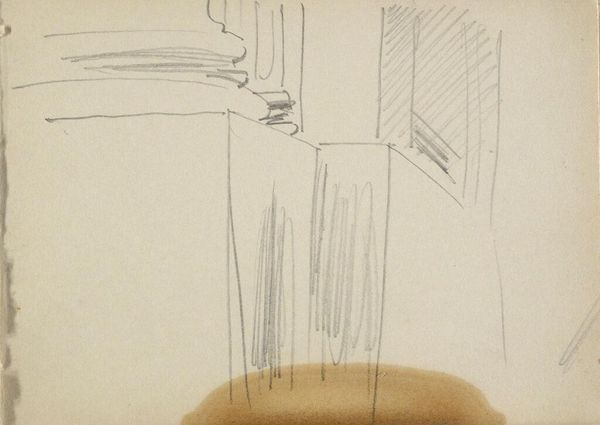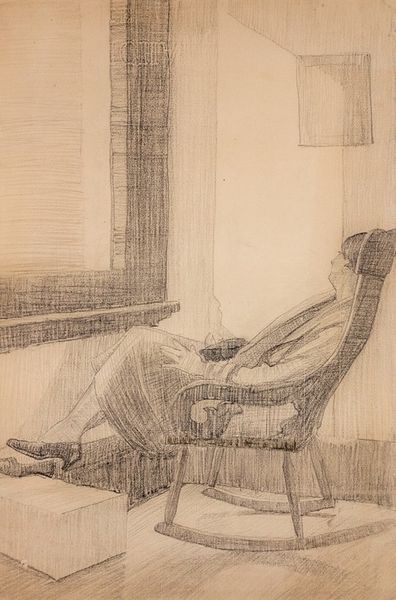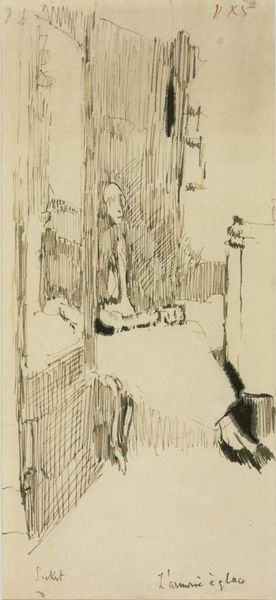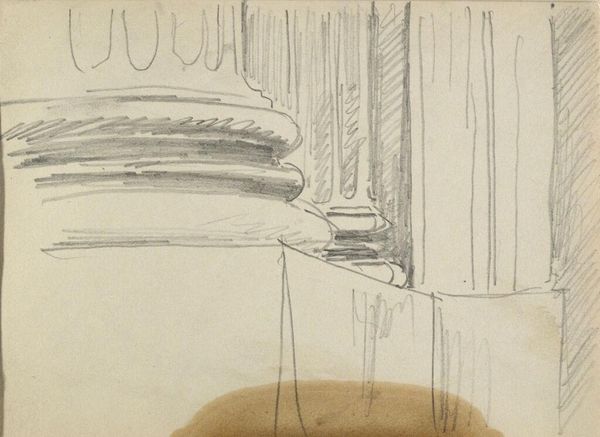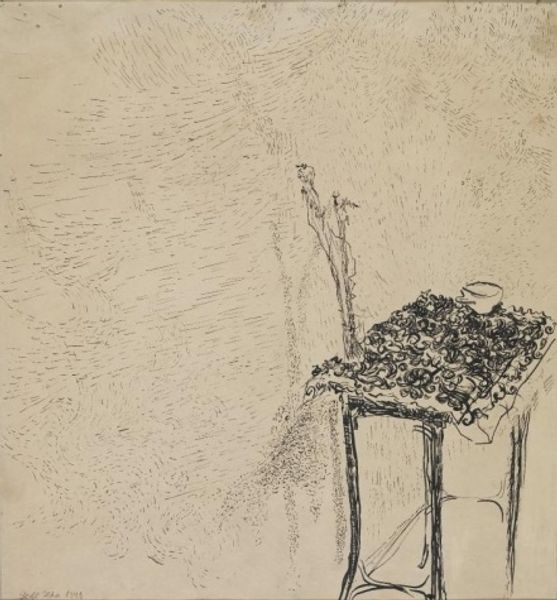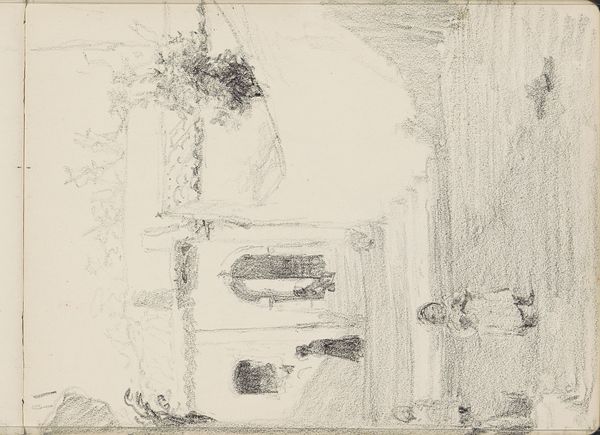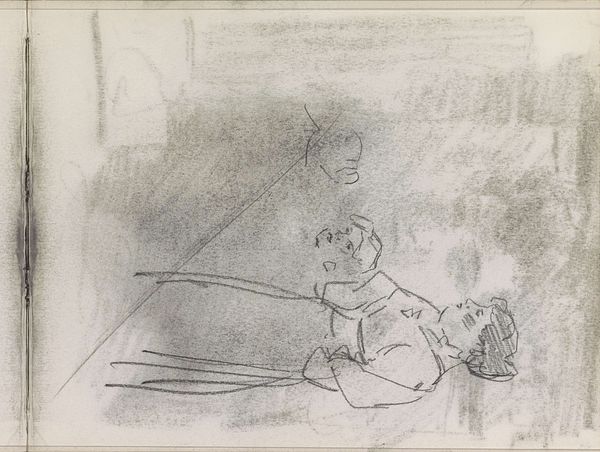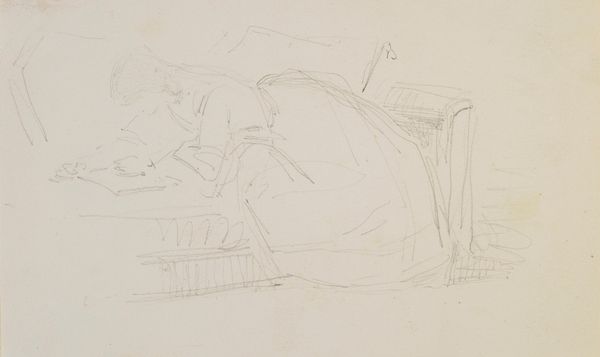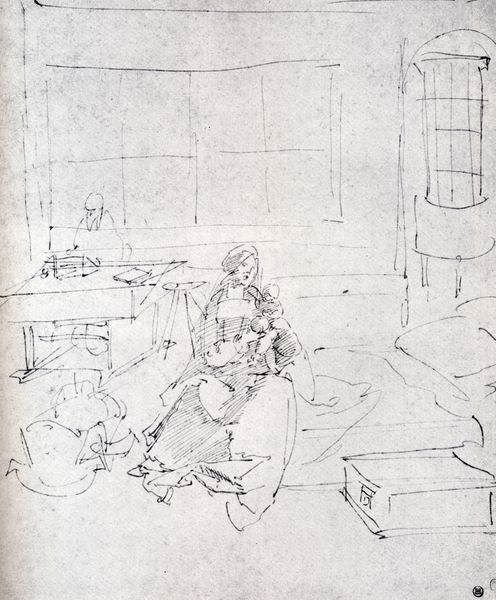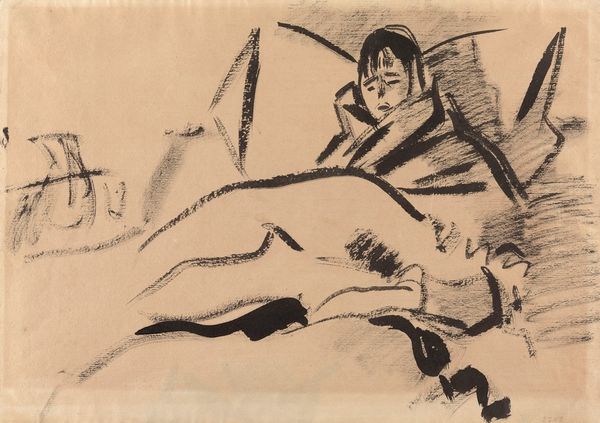
Copyright: Public domain
Editor: Here we have Toulouse-Lautrec’s "Little Lodge" from 1897, a pencil drawing on toned paper. It’s so understated, almost a glimpse, but those curving lines of the furniture are quite elegant. What strikes you about this piece? Curator: It's interesting to consider this sketch not as a preliminary study, but as a finished product reflecting the artist's conscious choices about labor and resources. Think about the 'readymade' concept Duchamp would later popularize, except applied to traditional media. Editor: So, instead of elevating a mass-produced object, he's elevating the sketch, with all its visible marks of process? Curator: Exactly. We see the pencil marks, the visible layering, and the toned paper, which isn’t just a neutral ground but a material decision that immediately affects the overall tone. It makes us question traditional notions of artistic skill and refinement. Was Lautrec making a commentary on the commodification of art by showcasing a less ‘precious’ method of production? Editor: That’s fascinating. It's almost as if he's revealing the means of production, not hiding them. How does that idea of “process” influence the composition? Curator: The composition is decidedly casual. There's an immediacy, but consider the broader implications. Is this informality a challenge to academic art standards? Or perhaps a reflection of the increasing speed of modern life, demanding quick captures of fleeting moments? Consider the materials, readily available and unpretentious, a direct response to an art market obsessed with extravagance. Editor: So, it is also about making art more democratic? Curator: Precisely! It opens up the discussion to wider accessibility, reducing art-making to essential material, like pencil and paper. That said, these simple sketches ended up being coveted objects. So how should we think about them? Editor: It's given me a new appreciation for how choices in material can challenge what we think of as “finished art.” Curator: Agreed. Lautrec provokes us to think beyond aesthetic appeal, to analyze the material conditions and societal context of artistic creation.
Comments
No comments
Be the first to comment and join the conversation on the ultimate creative platform.
